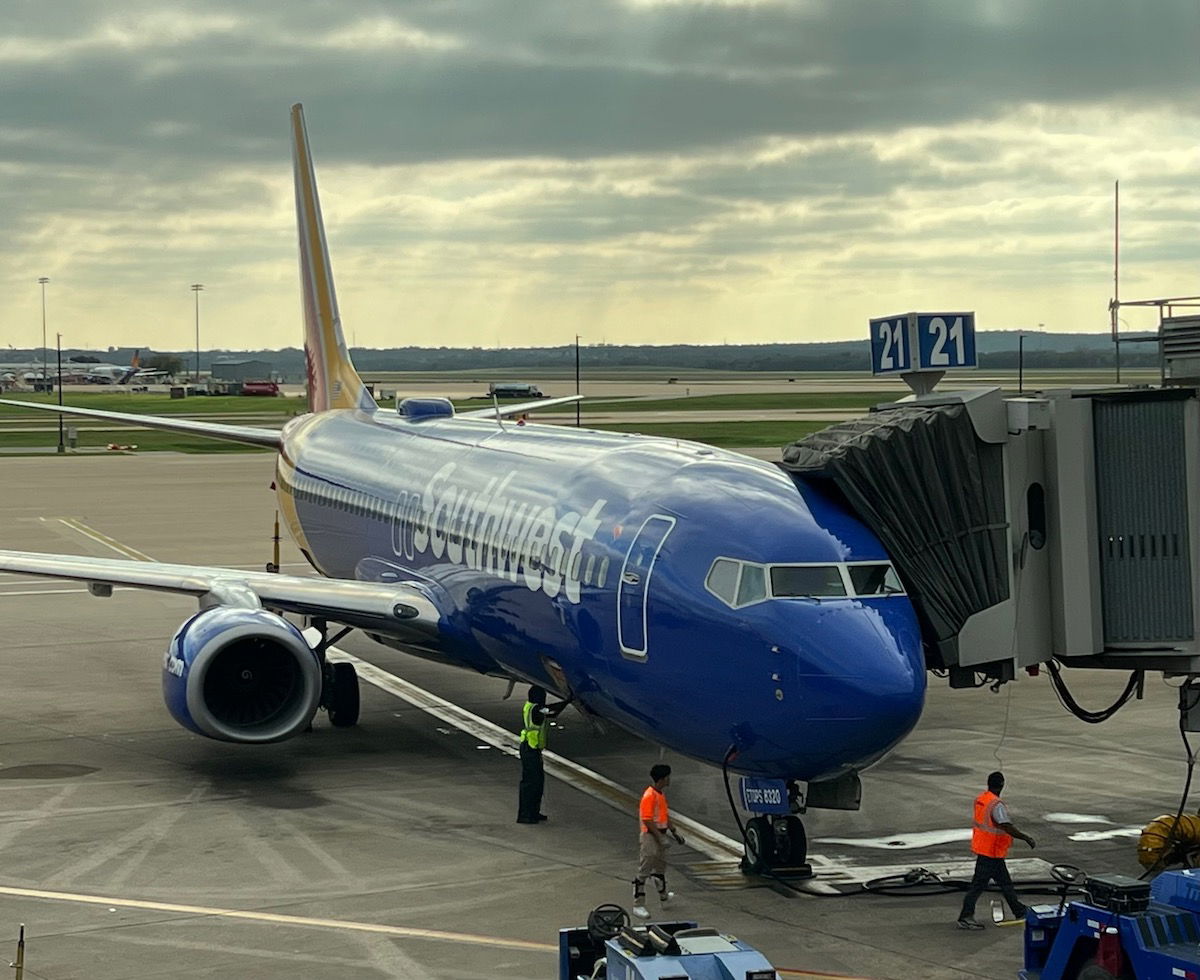Southwest Airlines is going through quite the transformation at the moment, as the airline is changing just about everything regarding its business model and passenger experience. Along those lines, the Dallas-based airline has just revealed its Q2 2025 financial results, and there are some interesting details in here, as this was basically the last quarter of the old(ish) Southwest.
Southwest reports lackluster financial results
Southwest has reported its Q2 2025 financial results, and they’re not terribly impressive. Let’s look at some of the key metrics, comparing Q2 2025 to performance in the same quarter the previous year. The airline reported:
- Operating revenue of $7.2 billion, down 1.5% compared to $7.4 billion in Q2 2024
- Net income of $213 million, down 42% compared to $367 million in Q2 2024
- Total revenue per air seat mile of 15.41 cents, down 3.1% compared to 15.90 cents in Q2 2024
- A load factor of 78.5%, down 4% compared to 82.6% in Q2 2024
- Operating expenses of $7 billion, up 0.9% compared to $6.95 billion in Q2 2024
The airline also also shared an updated outlook for Q3 2025, and expects total revenue per air seat mile to be down 2% to up 2%, anticipates total air seat miles to be flat, and predicts the cost per air seat mile will be up 3.5-5.5%.
The airline notes that this guidance “assumes a modest sequential improvement in demand.” That’s not exactly encouraging. Costs will be up materially, capacity will remain the same, and there’s a four point range in revenue per air seat mile. Revenue per air seat mile being up 2% with costs being up 3.5% wouldn’t be bad, while revenue being down 2% with costs up 5.5% would be very bad.
It’s a tough time to be any airline other than Delta or United. The US airline industry has changed quite a bit in recent years, and much of the profits come from premium travel, long haul travel, and loyalty programs. While Southwest does pretty well on the loyalty program front, it doesn’t have a premium cabin, and also doesn’t fly long haul (at least not yet). At least Southwest is profitable, unlike most other primarily domestic airlines.
Here’s what Southwest CEO Bob Jordan had to say about these results:
“We continued to make meaningful progress against our transformational plan in second quarter, most notably implementing bag fees and a basic economy product. We had an exceptional operational rollout and continued to deliver outstanding service — a testament to our People. These initiatives are coming online quickly, and we are pleased with performance thus far, including bag fee revenue exceeding expectations. We are encouraged by the incremental fare product buy up that is already occurring at this early stage and in advance of assigned and premium seating that we will begin selling next week for flights beginning January 2026.”
“We have already realized approximately one-third of our $1.8 billion 2025 initiative EBIT target in first half 2025 and remain highly confident in our ability to realize the remaining amount during the second half of the year, according to our plan. The value of these initiatives accelerates throughout second half 2025 and even more meaningfully into 2026. Underscoring belief in our transformational plan, strong management execution, and the ability to deliver significant value for Shareholders, our Board of Directors has authorized a new $2.0 billion share repurchase program, expected to be completed over a period of up to two years.”

Southwest is undergoing major changes at the moment. We’ve seen the airline introduce basic economy and add checked bag fees. Soon, the airline will also be rolling out assigned and extra legroom seating.
So, what’s the financial impact of all of this so far? Southwest claims that when it comes to bag fees, the financial benefit is “exceeding expectations, and there’s no operational impact.” One certainly wonders by what metric that’s being measured.
Sure, the airline might be earning more in bag fees than it expected, but how many people are choosing not to fly Southwest because of these fees? Based on Southwest’s huge revenue per air seat mile range for Q3 2025 (down 2% to up 2%), it seems that’s a big question mark.
Here’s another interesting detail. Southwest claims that when it launched basic economy in late May 2025, the company experienced “a temporary reduction in the conversion rate” of this product. The company claims it “took swift action and refined its booking flow and marketing approach in an effort to reduce friction, as well as offer additional promotional activity, and bookings and conversion rates quickly returned to expected levels.”
Okay, great… right? Well, the airline also claims that this resulted in an impact to Q2 2025 year-over-year revenue per air seat mile of nearly 0.5%, and it’s expected to impact Q3 2025 revenue per air seat mile by nearly 1%.
That’s interesting, and I’m not sure what exactly to make of that. Southwest both claims that bag fee revenue is exceeding expectations, while also claiming that basic economy is struggling, despite the fact that it’s the basic economy fares that have the most bag fees.
The two concepts are pretty intertwined, no? Is there something I’m missing, or is this just corporate speak for “we have no clue how this is going to play out, but let’s hedge our bets?”

Bottom line
Unsurprisingly, Southwest reported declining profits for Q2 2025, which is an industry trend, given all the uncertainty we’ve seen. Southwest is in a different situation than other airlines, though, given the extent to which it’s transforming its business model.
Over the coming quarters, it’s going to be fascinating to see what impact all these changes have on the carrier’s performance. The company claims that bag fee revenue is exceeding expectations, while basic economy is reducing revenue per air seat mile.
What do you make of Southwest’s Q2 2025 financial results, and bag fee and basic economy commentary?






